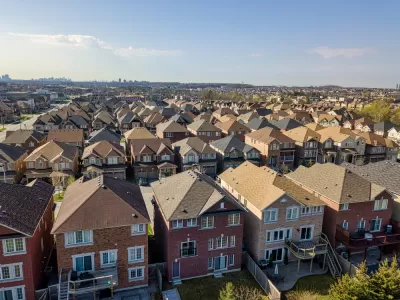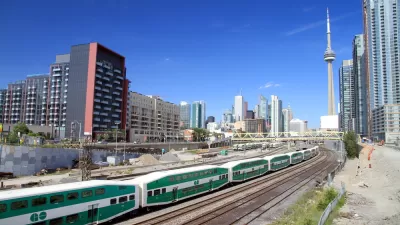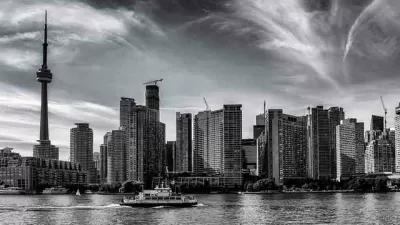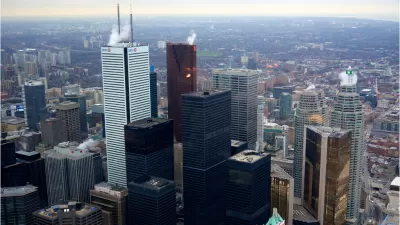The architecture critic for the Globe and Mail finds fault with two massive development proposals in the Toronto suburbs.

Alex Bozikovic, architecture critic for the Globe and Mail, writes about what he calls "a bit of Hong Kong in the 905"—the conceptual renderings for two new 'transit-oriented communities' in the Toronto suburbs of Richmond Hill and Markham.
"Drawings show forests of shimmering, skinny towers dropped into a flat suburban landscape," according to Bozikovic (see the renderings at the source article), and some local residents see a 'wasteland.'
While acknowledging the decidedly NIMBYesque flavor of the local opposition, Bozikovic writes "But in this rare instance, they’re right."
Bozikovic offers that frank assessment while also acknowledging the sound logic behind the proposal: "Put people near transit, and they will take transit rather than drive. And when you put enough people together, they can support retail and other amenities within walking distance."
So what goes wrong with the current proposal? According to Bozikovic the plan stretches that logic "to absurdity."
The High-Tech site would include 33 towers with 21,000 homes, plus retail and enough offices for about 7,000 jobs. One single block there would include three towers of 60 storeys and three of 80 storeys. The Bridge plan is comparable. Parks are thin. There are no schools. This would be one of the densest clusters of development in the entire region.
Bozikovic wrote an article in February 2020 that repeats similarities on the theme of how challenging it can be to build an urban suburb from scratch—and there are examples in the Toronto region, in Bozikovic's opinion, of failed attempts.
FULL STORY: With Doug Ford’s development plans for Toronto suburbs, sometimes big is too big

Planetizen Federal Action Tracker
A weekly monitor of how Trump’s orders and actions are impacting planners and planning in America.

Congressman Proposes Bill to Rename DC Metro “Trump Train”
The Make Autorail Great Again Act would withhold federal funding to the system until the Washington Metropolitan Area Transit Authority (WMATA), rebrands as the Washington Metropolitan Authority for Greater Access (WMAGA).

The Simple Legislative Tool Transforming Vacant Downtowns
In California, Michigan and Georgia, an easy win is bringing dollars — and delight — back to city centers.

The States Losing Rural Delivery Rooms at an Alarming Pace
In some states, as few as 9% of rural hospitals still deliver babies. As a result, rising pre-term births, no adequate pre-term care and harrowing close calls are a growing reality.

The Small South Asian Republic Going all in on EVs
Thanks to one simple policy change less than five years ago, 65% of new cars in this Himalayan country are now electric.

DC Backpedals on Bike Lane Protection, Swaps Barriers for Paint
Citing aesthetic concerns, the city is removing the concrete barriers and flexposts that once separated Arizona Avenue cyclists from motor vehicles.
Urban Design for Planners 1: Software Tools
This six-course series explores essential urban design concepts using open source software and equips planners with the tools they need to participate fully in the urban design process.
Planning for Universal Design
Learn the tools for implementing Universal Design in planning regulations.
Smith Gee Studio
City of Charlotte
City of Camden Redevelopment Agency
City of Astoria
Transportation Research & Education Center (TREC) at Portland State University
US High Speed Rail Association
City of Camden Redevelopment Agency
Municipality of Princeton (NJ)





























